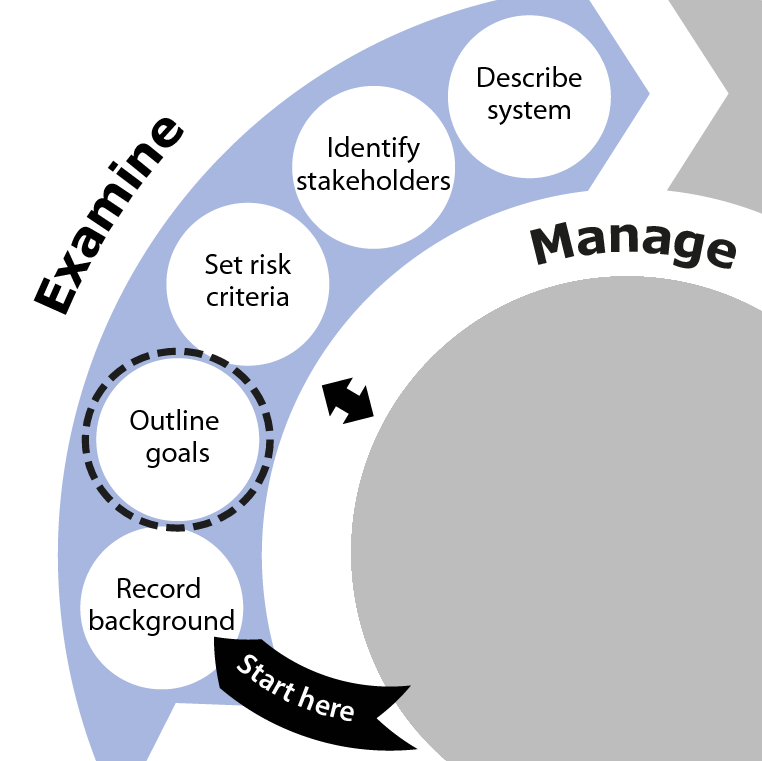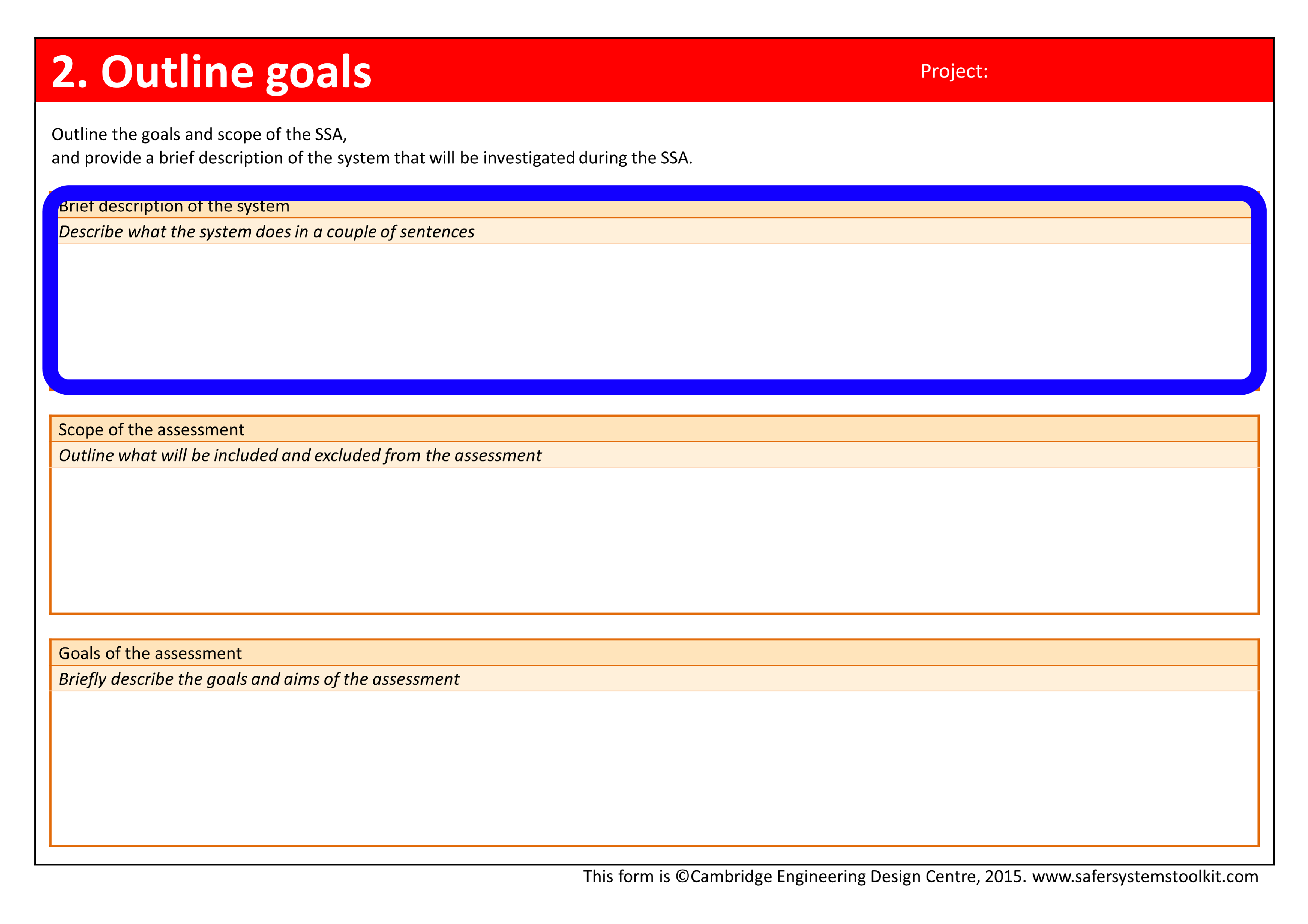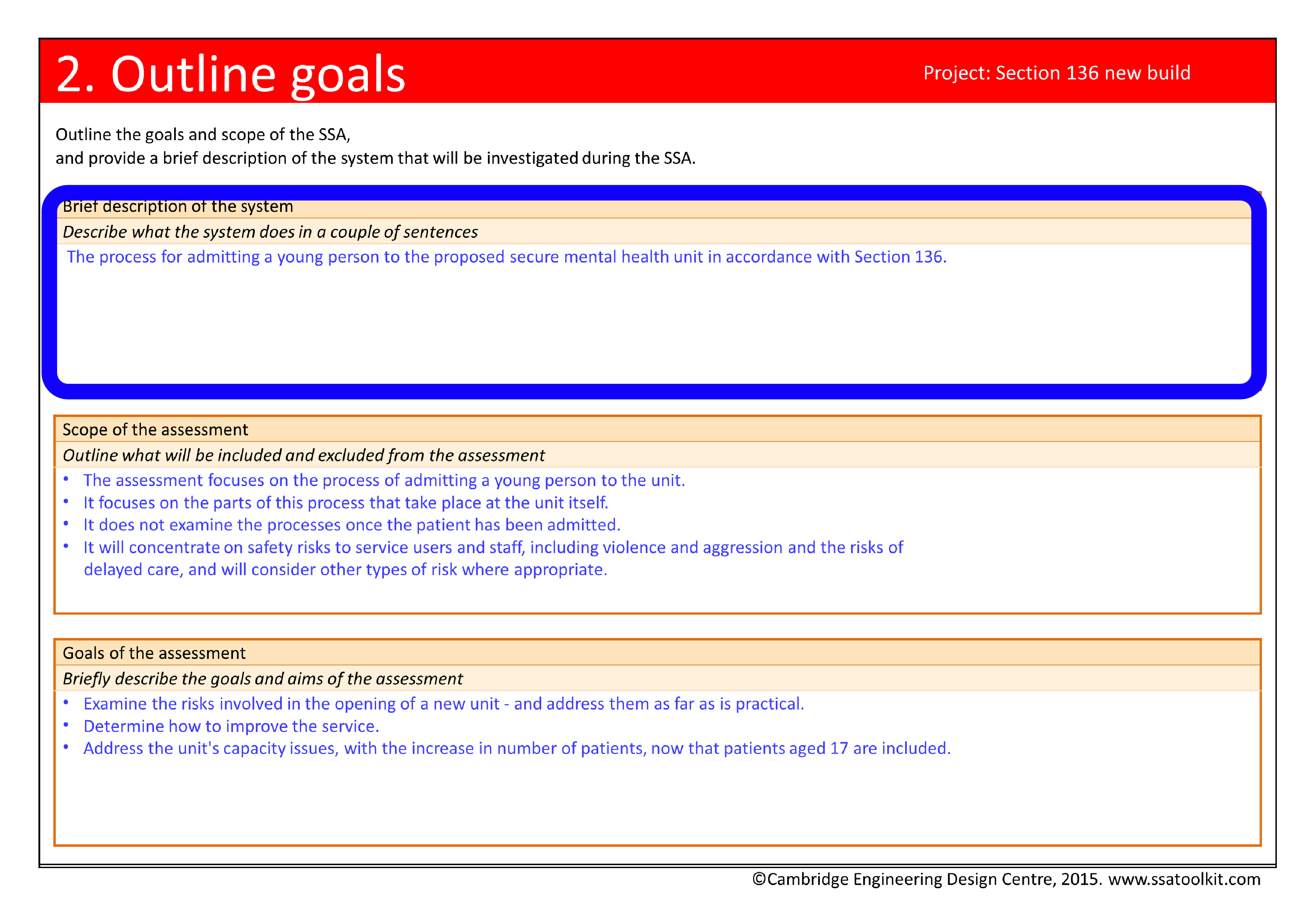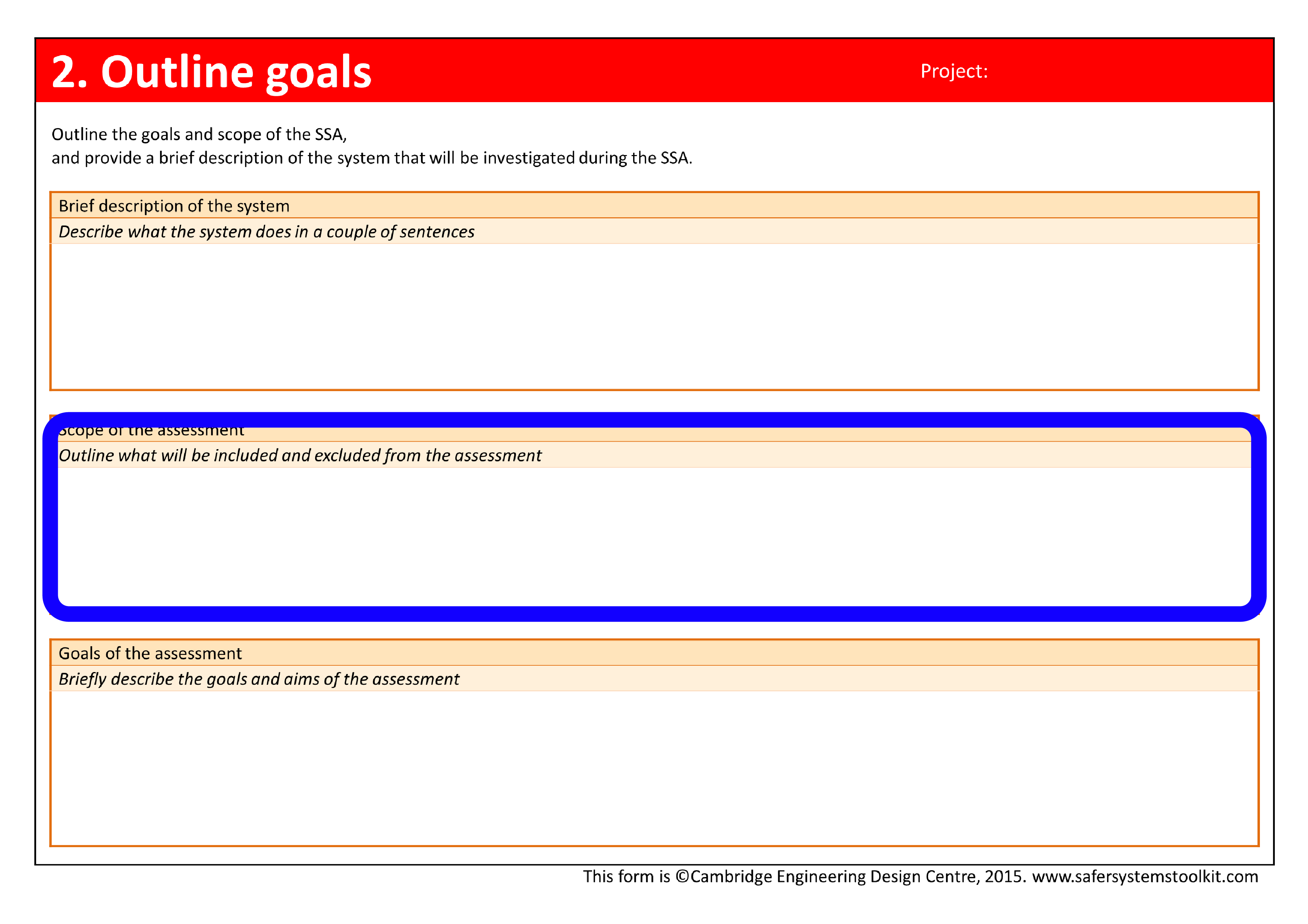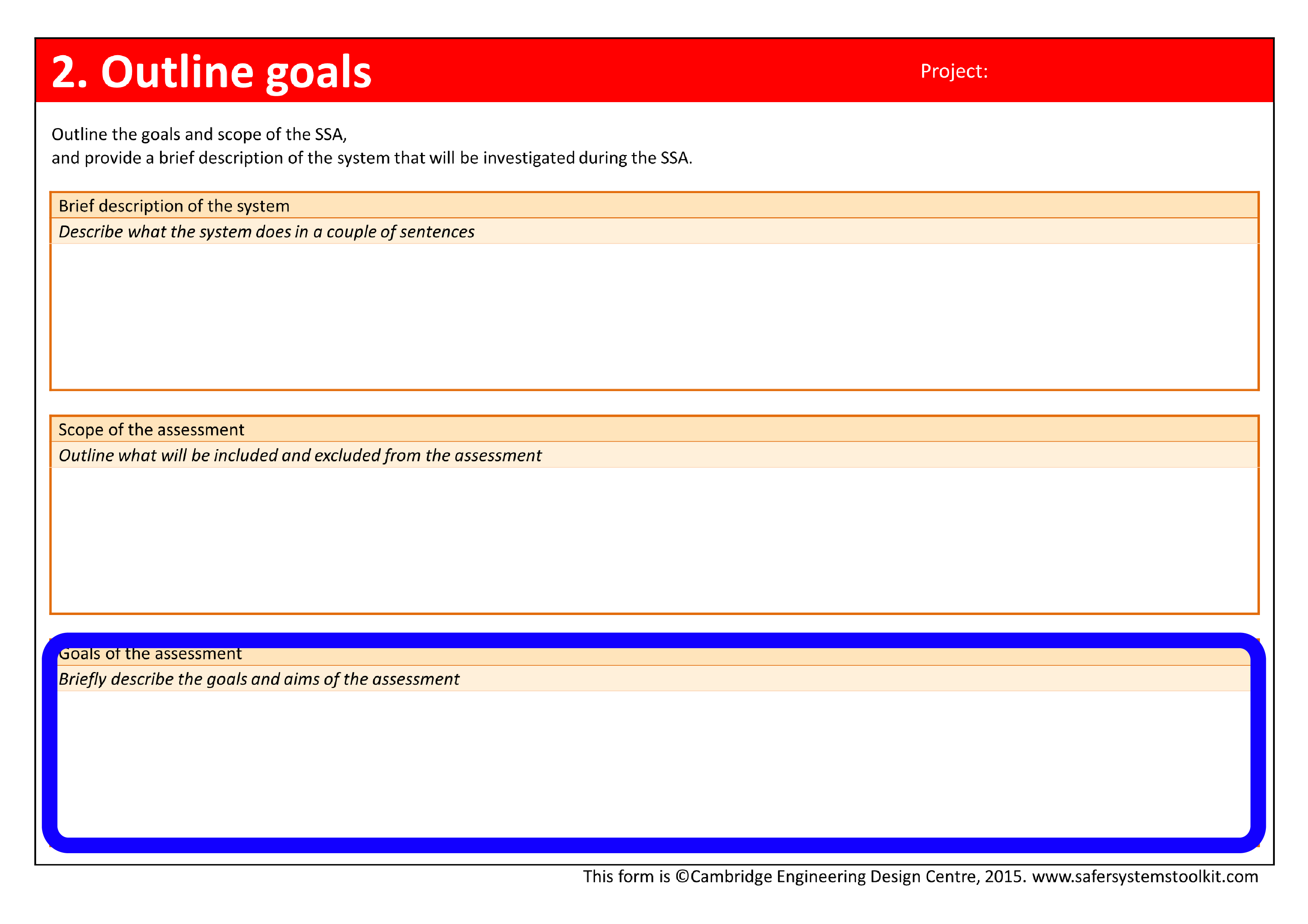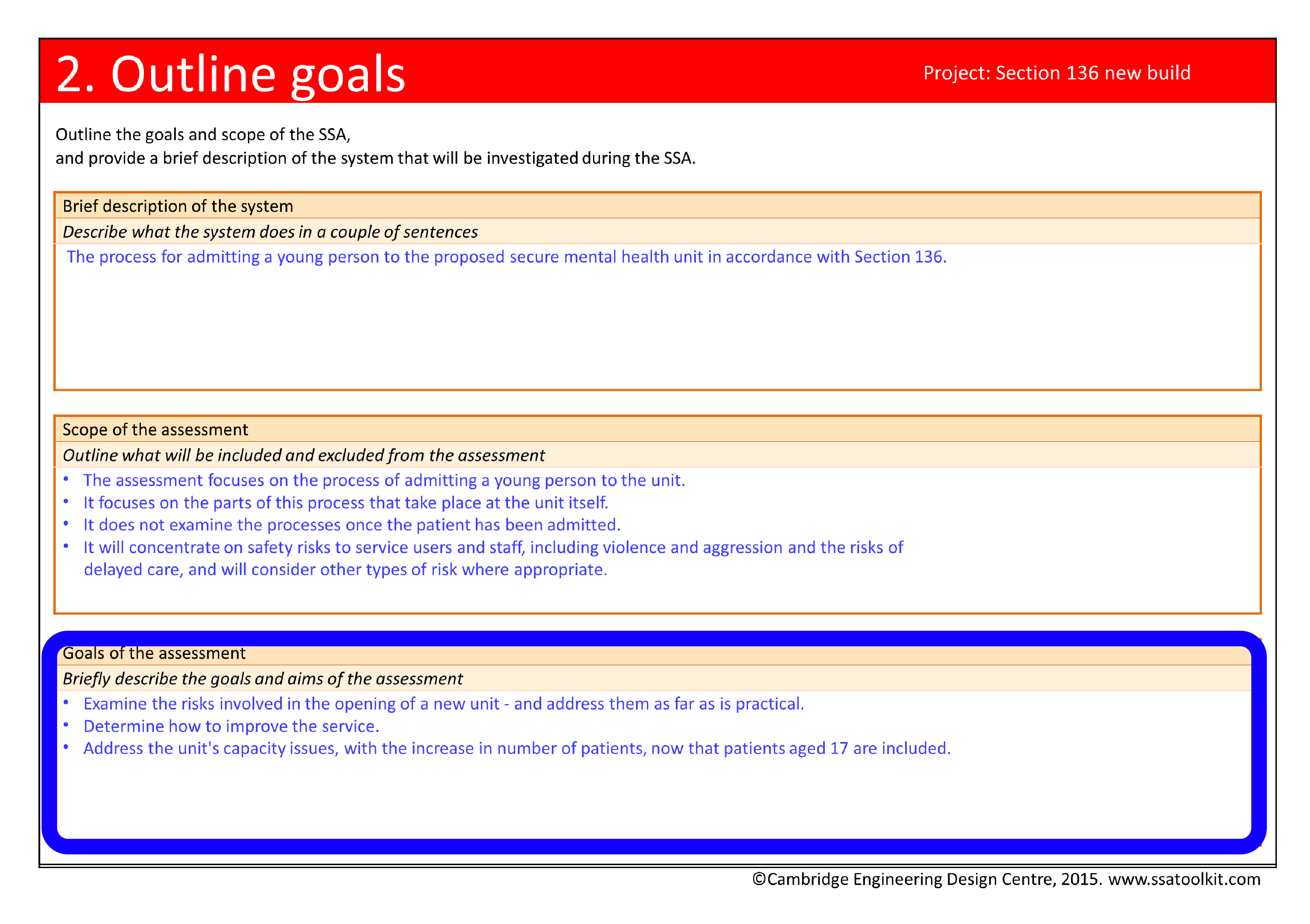Outline goals
Describing the aims of the assessment
Describing the system (in words)
Putting ‘Describing the system’ into practice |
|
|---|---|
|
|
|
Setting the scope
It is useful to be explicit about the Scope of the assessment, i.e. about what is included and what is excluded from the SSA. There can be pressure to feel that it is necessary to cover everything. However, this is often not feasible in practice: real life systems are typically complex with many interconnecting components. Focusing on the most relevant parts of the process or goals can be key to ensuring that helpful outcomes are achieved.
Putting ‘Setting the scope’ into practice |
|
|---|---|
|
|
|

